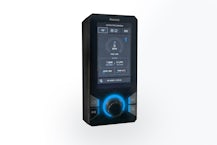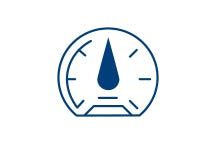- Products
The Safe Operation of High-Pressure Jetting Equipment

Personnel that operate high-pressure equipment must be suitably qualified and authorised to do so, and should be accompanied by a fully-trained supervisor at all times. Before any jetting works commence, operators should be issued with the correct documentation, complete a thorough risk assessment, and ensure that they have a thorough understanding of the jetting task and the correct use of high-pressure equipment.
Below is a list of our top tips for the safe operation of equipment, based on commonly reported injuries, near misses and engineer experiences.

BEFORE JETTING
Daily checks to the conditions of the equipment, safety valves, and the levels of oil in the pump, gearbox, engine and fuel tank should be undertaken before commencing any jetting activities. Basic maintenance tasks can be completed by users, though it is advised that approved manufacturers or agents are engaged for more technical maintenance and repairs. Before commencing any high-pressure jetting activities, you should:
- Undertake a thorough on-site risk assessment.
- Place warning signs and protective barriers to prevent unauthorised access to the jetting site.
- Provide all operatives with the correct documentation and ensure that they know how to complete jetting tasks safely.
- Ensure that all authorised operatives on-site know how to stop the high-pressure equipment in case of emergency.
- Check that the jetting machine has been properly serviced in line with the manufacturer’s guidelines.
- In freezing conditions, complete all anti-freeze procedures and check the jetter for ice before starting the machine to prevent the risk of ice damage to the internal workings of the machine or being discharged from the jetting nozzle.
- Check that the high-pressure unit has been depressurized before switching on the machine.
- Hoses should be checked along the entire length at the start of each job to ensure they are free from damage. They should also be fitted with the correct couplings, which should be tightened with a spanner if needed.
- Ensure that the jetting hose has either a metal ring five meters from the jetting nozzle or a leader hose attached to indicate when the jetting nozzle is close to the pipe opening.
- Ensure that the jetting nozzles you have selected to use are compatible with your jetting machine.
- Check that the jetting nozzles have no blocked holes that may cause the system to over-pressurise.
- When using a radio remote control, ensure that it is safe to use it in the working area.
- Consider using a ‘tiger tail’ attachment or hose ‘roller-upper’ to protect the jetting hose from fraying and kinking.
- It is recommended to set the pressure of a spray gun to half the maximum pressure before the machine is started.
- Consider where the cleared blockage will be discharged before attempting to unblock the pipe.

WHILE THE JETTER IS IN OPERATION
Once all pre-checks have been completed, operatives can begin the jetting task. Following the correct operational procedures is paramount to preventing serious injury, many of which we have listed in our Do’s and Don’ts below.
Do
- Avoid any distractions, such as the use of mobile phones, whilst using the machine.
- Control hoses with two hands. Many modern jetters, including Rioned machines, have been designed with additional safety features to facilitate this.
- Turn off the supply to the high-pressure jetting nozzle before it is removed from the pipe opening.
- Use the jetting machine’s hose guidance where possible.
- Ensure that the correct confined space regulations have been met before entering a drain or sewer and attempting to place or retrieve the jetting nozzle from a pipeline opening.
Don’t
- Operate high-pressure equipment if you are under the influence of alcohol or other substances.
- Operate high-pressure jetting equipment while up a ladder.
- Operate high-pressure jetting equipment from scaffolding unless it has been suitably designed, built and adequately secured to do so.
- Engage the high-pressure pump until the jetting nozzle is at least three feet from the entrance to the drain or sewer.
- Attempt to clear drains and sewers in one pass - this can lead to a build-up of pressure and debris behind the jetting nozzle.
- Attempt to clear a blockage using a nozzle that has more forward force than rear force, or chain flail jets that have unequal chain lengths, to avoid severe vibration and hose ejection.
- Block the control levers or hydraulic parts when in use – this includes leaning equipment on or near them or resting on the equipment.
- Loosen or remove any guards or covers fitted to the jetting equipment while it is in use. If any guards need to be removed for access, they should be refitted securely before the machine is powered up.
- Direct the high-pressure jetting hose at electrical equipment or power lines.
- Hold a finger or any other body part over the high-pressure jetting nozzle while it is in use.
- Open the bleed screws when the pump is running at high pressure.
- Exceed the maximum pressure marked on the manometer when using a spray gun.
- Place your fingers into the venturi pump inlet and always secure the free end of the hose securely.

MINIMISING THE RISK OF FIRES + CARBON MONOXIDE POISONING
Jetting machine engines become very hot and release harmful gases into the atmosphere when in use. Therefore, it is extremely important to take measures to prevent fires and carbon monoxide poisoning:
- Check that the jetting site is well-ventilated.
- Ensure that the vehicle’s cab is fully ventilated.
- Open the rear and side doors of the vehicle while the high-pressure jetter is in use.
- Ensure that the vehicle is fitted with a working carbon monoxide detector to warn of any gas build-up.
- Avoid exposing dry grass and other combustibles to any exhaust gases produced by the jetting machine.
- Always keep the muffler and engine clear of any dirt and debris.
- Check hoses and pipes for leaks.

AFTER JETTING TASKS HAVE BEEN COMPLETED
This can involve simple steps such as replacing the covers on drain and sewer entrances, ensuring that blockages are safely disposed of, and using welfare stations, as detailed below.
Do
- Depressurise the high-pressure circuit when you have finished using the jetting equipment.
- Fully ventilate the vehicle cab to prevent a build-up of potentially harmful gases released from the jetter engine while it is in operation.
- Thoroughly wash body parts, equipment and protective clothing that may have been exposed to bacteria and other harmful substances released from sewers and drains.
- Clean any dirt and debris from the jetting site to minimise the risk of tripping or injury to clients and members of the public.
- Ensure that the blockage debris has been removed to a safe place.
Don’t
- Use high-pressure equipment to clean down PPE whilst you, or any other operative, are still wearing it.
- Forget to replace any drain and sewer covers, pipes or equipment that you have moved during jetting activities.
FIND OUT MORE:
See the Health & Safety page for more Top Tips for the Safe Operation of Equipment
Find out more about Jetter Training in your country.
Download the Risk Assessment Checklist.
Download the Safety Assessment Checklist.
- Products














